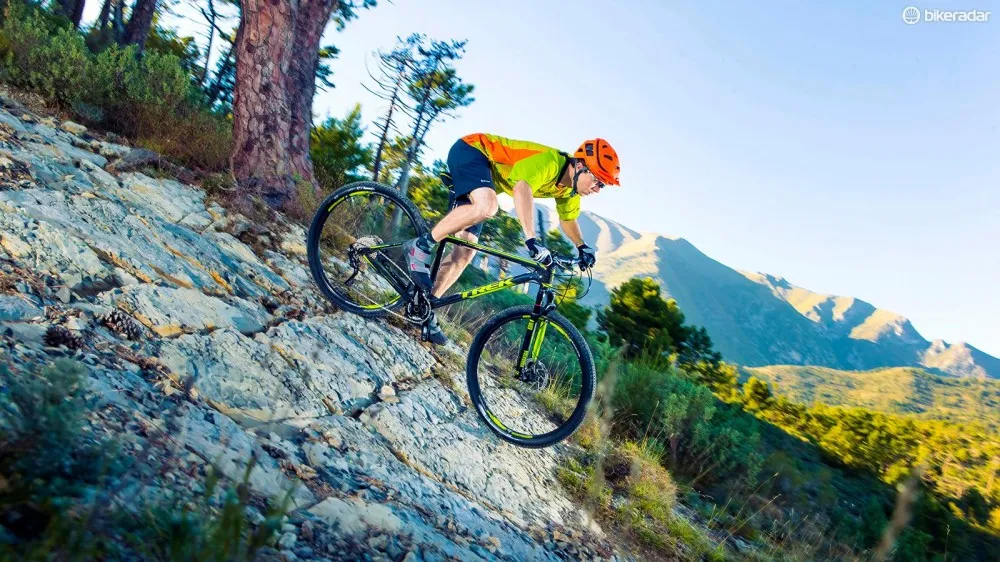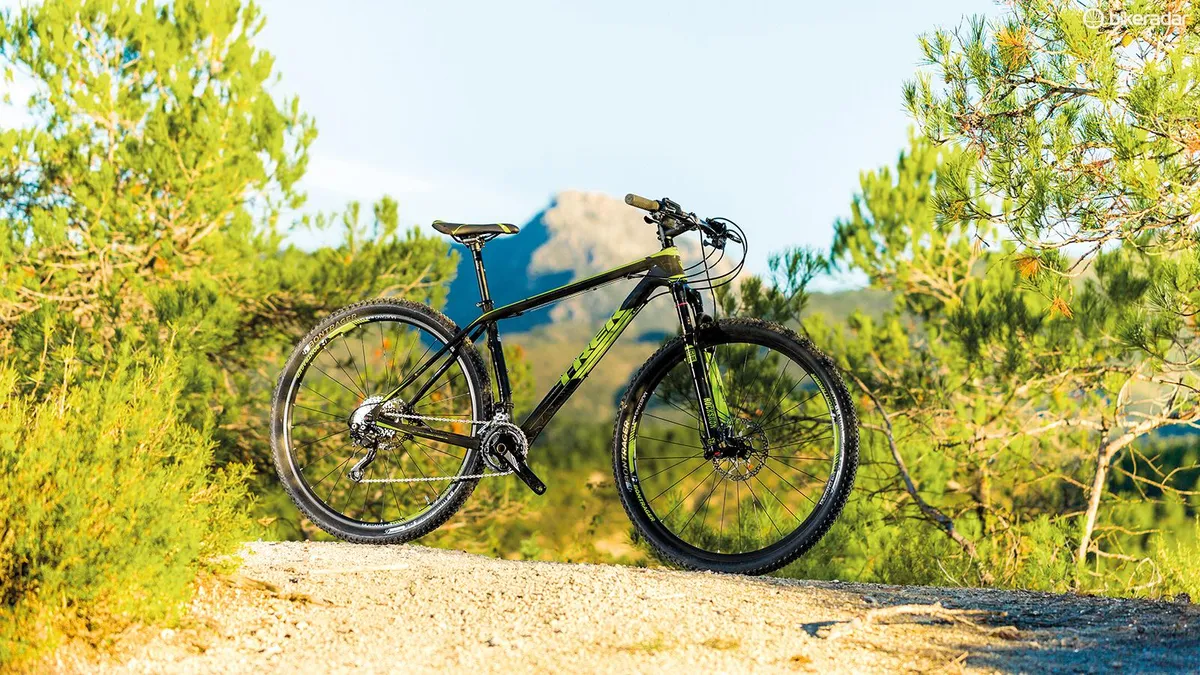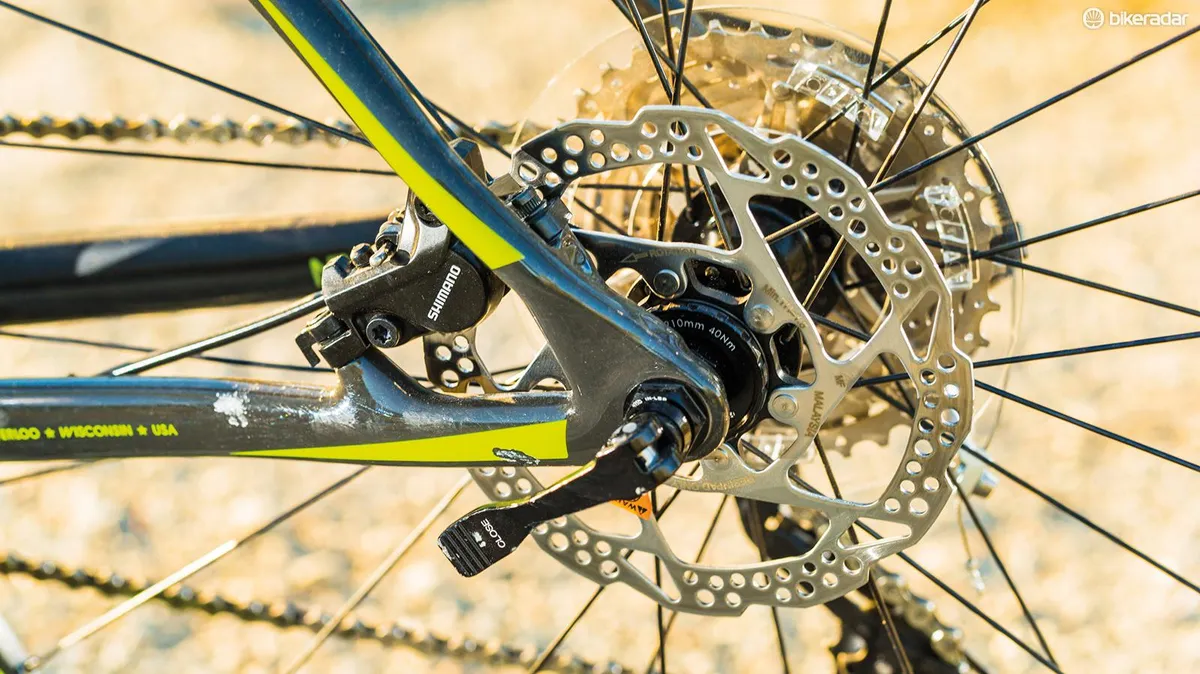Trek has been building carbon race bikes for longer than any other major brand and the Superfly 9.6 uses its latest OCLV composite chassis to provide a great base for upgrading. It’s not a forgiving bike out of the box though.
- Highs: Direct, upgradeable carbon frame with sound stop/go kit and suspension
- Lows: Heavy wheels, tiny tyres and stiff frame make it hard to gain and hold speed through rough sections
- Buy if: You want a direct, but occasionally brutal race bike
Frame and equipment: all about the chassis
The frame is definitely the draw here, as the state of the art OCLV Mountain composite structure is the result of nearly 20 years of evolution. It’s not particularly light (around 1200g) but it’s seriously stiff and gets rubberised belly protection for long term survival.

The OCLV Mountain frame of the Superfly is loaded with impressive practical details, including swappable rear dropouts
Trek – or specifically its then sub brand Gary Fisher – was also the first major company to put its weight behind 29er wheels over a decade ago. That makes it unsurprising that it’s still fully committed to bigger wheels for bigger speed applications. Superfly wheel selection is size-specific though – the smallest 15.5in frame gets a 27.5in wheel option. Accurate sizing is definitely a strong point of Trek, with three rather than two frames in the most popular mid-size band.
Ride and handling: pin-sharp but punishing
With a curved seat tube to give short chainstays and put body weight further back and custom offset G2 geometry the Superfly steering feels particularly light and nimble even when jumping onto it straight from a 650b ride. The 15mm axle adds accurate feedback to the fork tips, though a straight steerer with oversized lower bearing rather than a true tapered steerer design dilutes some of the advantage.

The carbon framed Superfly 9.6 is kitted identically to the alloy Superfly 7, but is a significantly more punishing ride
If you’re expecting the usual floated ride of a carbon 29er though, you’ll be in for a shock. The Bontrager Expert grade tyres are more wooden in feel than the aftermarket Team versions and despite 2.2in labelling they’re under 2in wide and 1.75in high. That means they roll fast on smooth surfaces, but deliver a battering ride in the rough. The heavy rear wheel also made the Trek noticeably slow to accelerate even with the small volume tyres. Even with a skinny 27.2mm seatpost and slim seatstays to add flex the frame is firm. That’s great for power transfer but medium sized roots, ruts and rocks delivered proper body blows when trying to power through them at low speeds. The tyres and frame meant the quick steering G2 front end got knocked off line easily on techy sections and bar feel was far from ideal in comfort terms.
There’s some improvement if you turn the tyres tubeless, but we only started to get the skim and float we expected from a carbon big wheeler when we switched to more supple, larger volume tyres.
This is inherently a bike that takes no prisoners. If you can’t afford to upgrade later – or want a smoother ride – then the alloy frame of the identically specced Superfly 7 impressed when we tested it last year.



